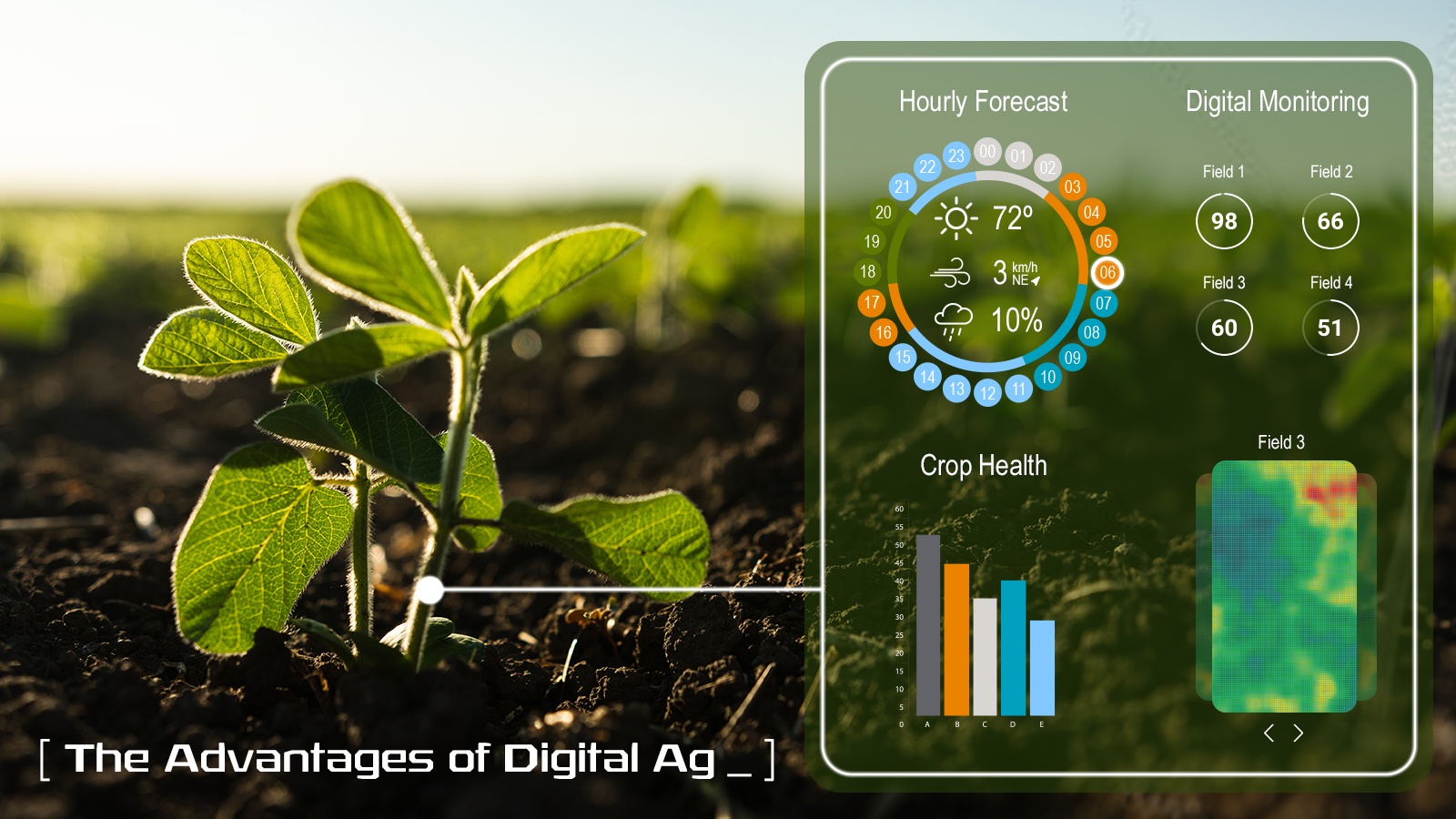The Advantages of Digital Ag
Embracing digital ag solutions helps growers develop more intimate and profitable relationships with their farms.

Historically, the ag industry is a primary driver of technological innovation. From the earliest days of irrigation in ancient Mesopotamia to today’s drones and near-infrared imagery, the need to feed people puts agriculture firmly in the driver’s seat of technological advancement.
Often, the most successful farmers are those who are early adopters of cutting-edge technology. Forward-thinking growers recognize the value of technology to not only stay in business but thrive as they do it.
Digital Ag in Action
Meade McDonald has been with Syngenta for 19 years and currently serves as the company’s digital ag solutions marketing manager for the U.S. His team is responsible for helping growers and retailers implement digital tools on the farm.
When engaging with retailers and growers regarding the Cropwise portfolio, McDonald and his team focus on answering three fundamental questions:
- What specific agronomic or risk-based challenge are you faced with on your farm?
- Does Syngenta have a solution for that in its crop protection portfolio?
- How can we better solve that problem with a digitally enabled tool or service?
To establish trust and credibility, McDonald says the digital ag team must be well-versed in the issues growers deal with on the farm. Supplying fancy algorithms simply isn’t enough. The digital team needs to understand how drought affects a Texas cotton crop; when the weather is conducive for treating potato late blight in Idaho; or what economic conditions contribute to growing and marketing soybeans successfully in McLean County, Illinois, or Tippecanoe County, Indiana.
“We’re doing a good job when we can engage in conversations with growers about the challenges they face in the markets or agronomically and be relevant in those conversations,” McDonald says.
When engaging with retailers and growers regarding the Cropwise portfolio, McDonald and his team focus on answering three fundamental questions: What specific agronomic or risk-based challenge are you faced with on your farm? Does Syngenta have a solution for that in its crop protection portfolio? How can we better solve that problem with a digitally enabled tool or service?
Which Data Matters?
The first question many growers ask is which data is important for their operation. What numbers need to be collected and analyzed? What data matters to the software? The short answer is all of it. Many digital solutions on the market today offer detailed insights into just about any data growers can dig up and upload to their phone or desktop computer.
But the answer — “all of it” — can feel more than a little daunting. That, McDonald says, is precisely why he and his team start every conversation with a question about what the most pressing needs or challenges on that grower’s operation are.
“Not every farm faces the same challenges,” he says. “It could be weed resistance. It could be managing foliar diseases in corn. It could be the risk of inclement weather or the risk of declining corn or soybean prices. Our Cropwise tools are built to solve grower problems, but we must know what problems are most pressing for them.”
The goal of digital ag solutions is simplifying all the data a grower can collect into actionable information. Tools like those in the Cropwise digital portfolio from Syngenta equip growers and retailers with data that informs whole-farm decision-making. Satellite imagery can provide high-level scouting over even the largest operations. Growers can scout fields using a smartphone to record observations of plant stress, growth stage and insects on the ground and know exactly which fields to treat or check on later. Efforts to improve environmental sustainability on the farm can be recorded and recalled. Financial programs provide the ability to map fields, track inventory of fertilizer or crop protection products, and measure profitability acre by acre.
“Those tools are helping growers tackle agronomic and risk-based challenges,” McDonald says. “It’s about linking our crop protection portfolio with our Cropwise portfolio to better solve the challenges growers are facing.”
A Challenge and Opportunity
Of course, today’s solutions may not be relevant tomorrow, particularly in the realm of digital solutions. Just imagine digging a decade-old iPhone out of the junk drawer and trying to activate it. Odds are, it would be so obsolete that you couldn’t use it. But while some things may maintain their relevance for a good long while, digital software is constantly changing and evolving with new features and capabilities.
“We constantly have to update our digital tools to make them faster and more intuitive,” McDonald says. “The incredible rate of change in the digital space is both a challenge and an opportunity.”
If history is any indication, more and more growers will continue to adopt these technologies. Finding good labor will likely continue to be one of the biggest challenges facing the industry, and digital tools such as the Cropwise platform can improve growers’ efficiency, effectiveness and decision-making.
“Looking forward, we see the average farm getting bigger,” McDonald says. “We see the largest farms in the country adopting digital tools and technology the fastest, as they have the most to gain from digital adoption on the farm.”
So, whether you’re growing sugarbeets in Minnesota, peanuts in Georgia, citrus in California or corn and soybeans in the Midwest, take heed: American agriculture is on the digital train, and you’re welcome to climb aboard. Contact your local retailer to see the difference digital ag solutions can make for your operation.
4 Min Read
- Digital ag technology can provide actionable insights.
- Trusted relationships between growers and their digital solution providers are important.
- The Cropwise™ digital portfolio provides digital solutions that help growers to overcome agronomic and risk-based challenges.























